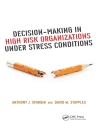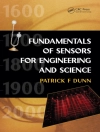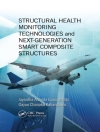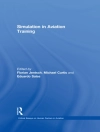- Assesses the viability of management strategies implemented to improve soil health, e.g. intercropping and zero tillage
- Provides a comprehensive coverage of the dimensions of soil health
- Reviews the role of organic and other amendments in improving soil health
Inhaltsverzeichnis
1.Soil health: towards a sustainable world: William R. Horwath, University of California-Davis, USA;
Part 1 Dimensions of soil health
2.Soil health: definitions, history, key concepts and hurdles: Michelle M. Wander, University of Illinois at Urbana-Champaign, USA;
3.Understanding biological processes in soil: Regina O’Kelley and David D. Myrold, Oregon State University, USA;
4.Mycorrhizae and soil health: Muhammad Adnan and Fazli Wahid, The University of Swabi, Pakistan; Shah Fahad, The University of Haripur, Pakistan; Muhammad Arif, The University of Agriculture Peshawar, Pakistan; Songmei Shi, Yunnan Agricultural University, China; and Xinhua He, Southwest University, China, University of California-Davis, USA and University of Western Australia, Australia;
Part 2 Cultivation practices and soil health
5.Agricultural traffic management systems and soil health: Paula A. Misiewicz, Magdalena Kaczorowska-Dolowy, David R. White, Edward Dickin and Richard J. Godwin, Harper Adams University, UK;
6.Assessing the effects of no-till cultivation practices on soil health: Alison Hamm and Daniel K. Manter, USDA-ARS, USA;
7.Cover crops for soil health: Sieglinde S. Snapp, Michigan State University, USA; Carmen M. Ugarte, University of Illinois at Urbana-Champaign, USA; Dane W. Hunter, Southern Illinois University, USA; and Michelle M. Wander, University of Illinois at Urbana-Champaign, USA;
8.Assessing the effects of crop residue retention on soil health: Hero T. Gollany, USDA-ARS, USA;
Part 3 The role of organic and other soil amendments
9.Assessing the effects of compost on soil health: Cristina Lazcano, University of California-Davis, USA; Charlotte Decock, California Polytechnic State University, USA; Connie T. F. Wong, University of California-Davis, USA; and Kamille Garcia-Brucher, California Polytechnic State University, USA;
10.Assessing the effects of using animal manure on soil health: Ashraf M. Tubeileh, California Polytechnic State University, USA; and Michael J. Goss, University of Guelph, Canada
11.Assessing the effect of biosolids on soil health: Fiona A. Nicholson, Anne Bhogal, Alison Rollett and John R. Williams, ADAS, UK;
12.Biofertilizers: assessing the effects of arbuscular mycorrhizal fungi on soil health: M. J. Salomon, The Waite Research Institute and The School of Agriculture, Food and Wine, The University of Adelaide, Australia; S. F. Bender, Agroscope, Switzerland; T. R. Cavagnaro, The Waite Research Institute and The School of Agriculture, Food and Wine, The University of Adelaide, Australia; and M. G. A. van der Heijden, Agroscope and University of Zurich, Switzerland;
13.Biofertilizers: assessing the effects of plant growth-promoting bacteria (PGPB) or rhizobacteria (PGPR) on soil and plant health: Elisa Zampieri, Institute for Sustainable Plant Protection, Italy; Iakovos S. Pantelides, Cyprus University of Technology, Cyprus; and Raffaella Balestrini, Institute for Sustainable Plant Protection, Italy;
14.The role of liming in improving soil health: Richard C. Hayes, Jason R. Condon and Guangdi D. Li, New South Wales Department of Primary Industries, Australia;
Über den Autor
Dr Richard Hayes is a Senior Research Scientist at the NSW Department of Primary Industries, Wagga Wagga Australia. He has over twenty years experience as a farming systems researcher, specialising in acid soil management, perennial agriculture and species evaluation. Dr Hayes has completed three post-graduate degrees all involving field research on acidic soils, including an examination of the response to lime of self-regenerating annual legumes, the effect of lime on soil water dynamics under perennial forages and the spatial variation of soil p H as it relates to the drill row.












